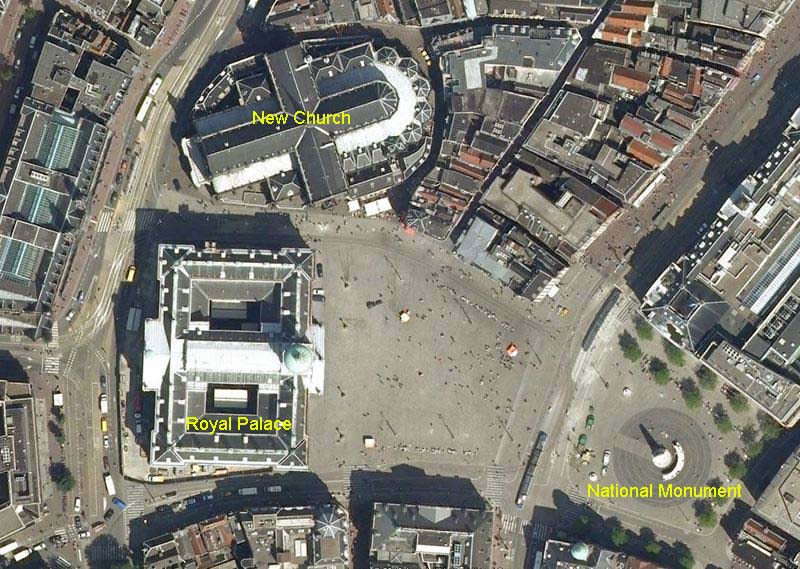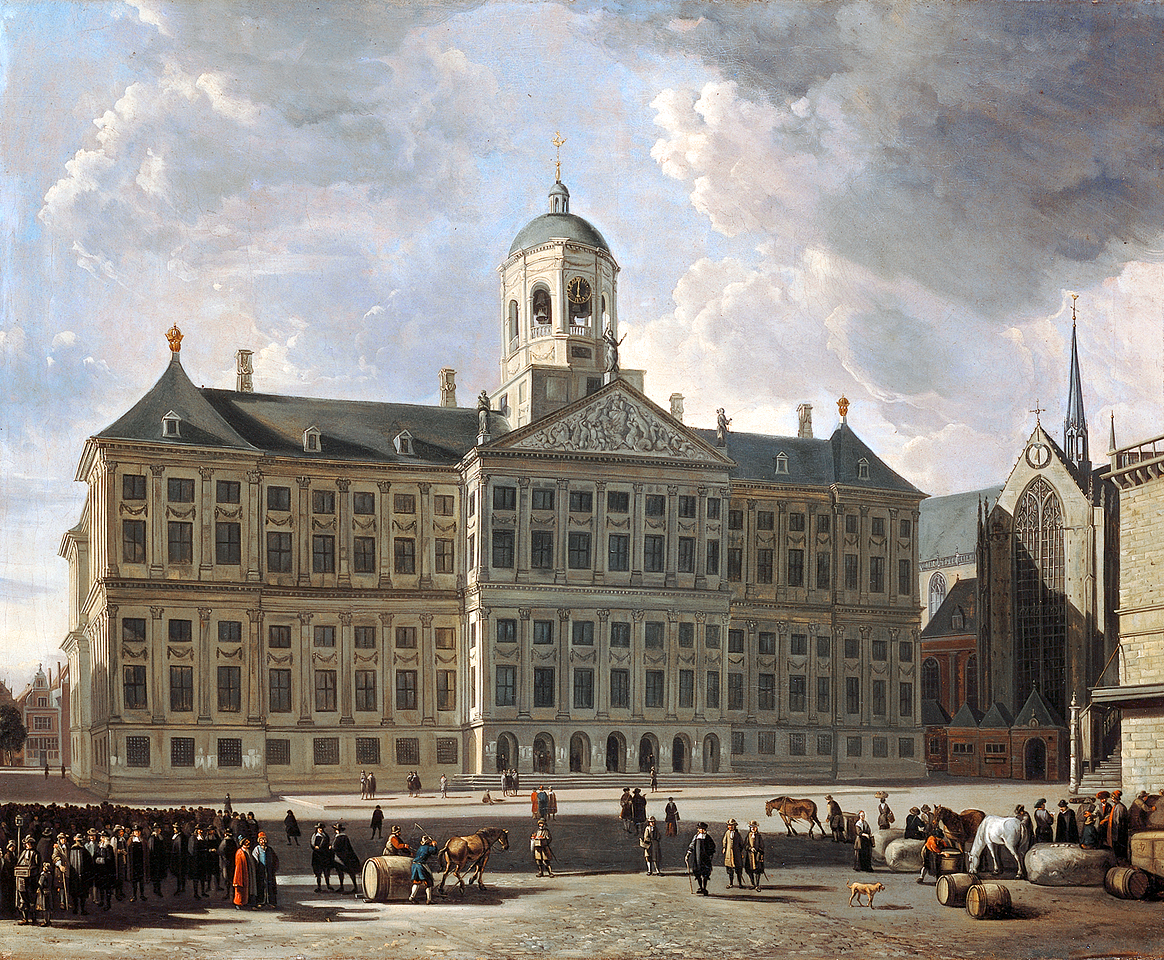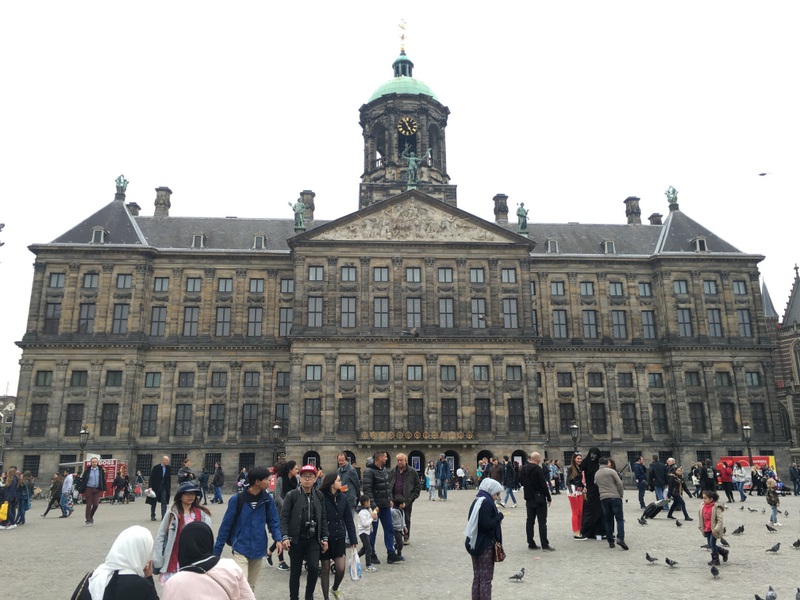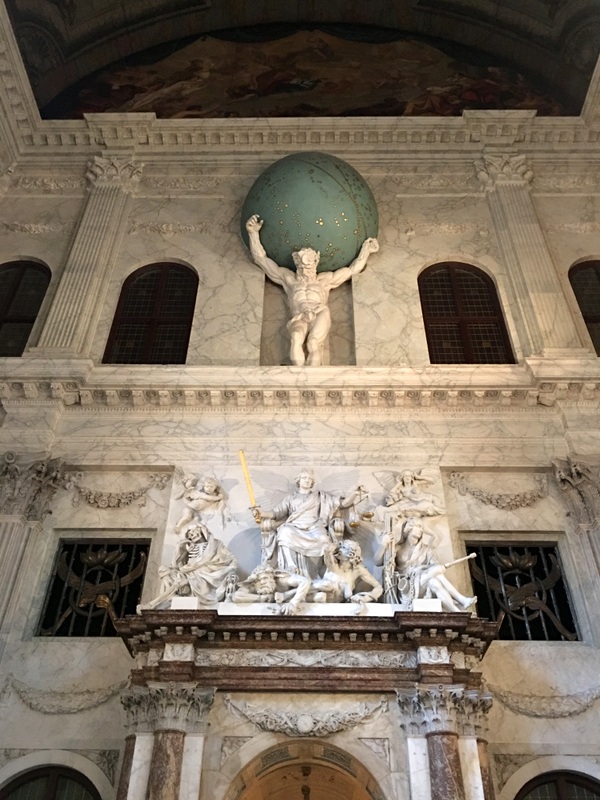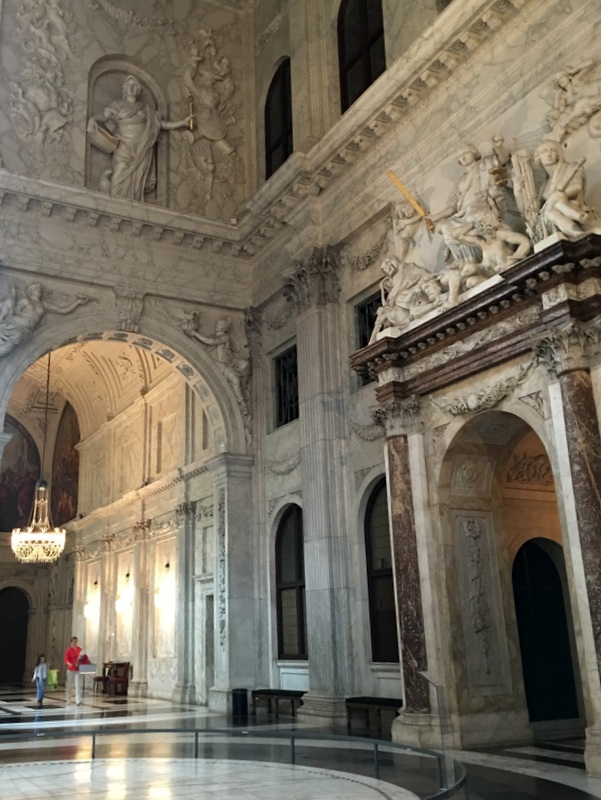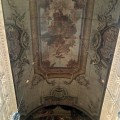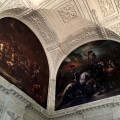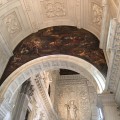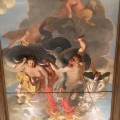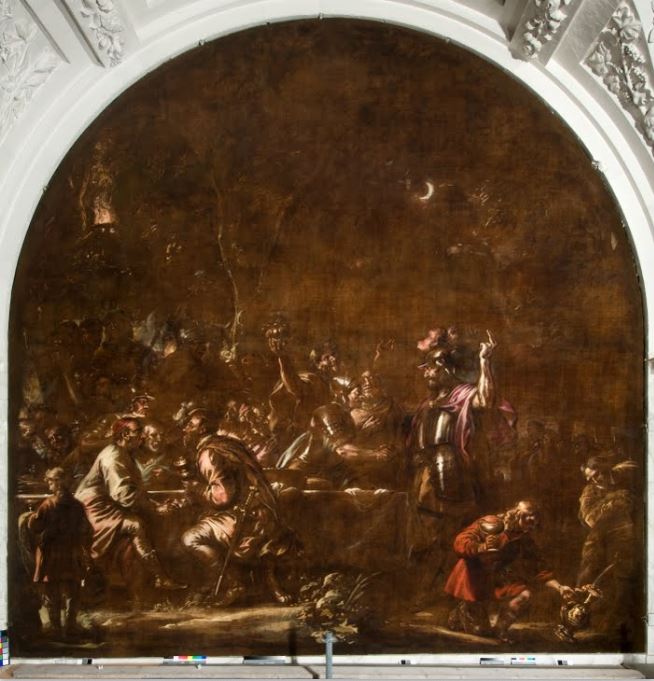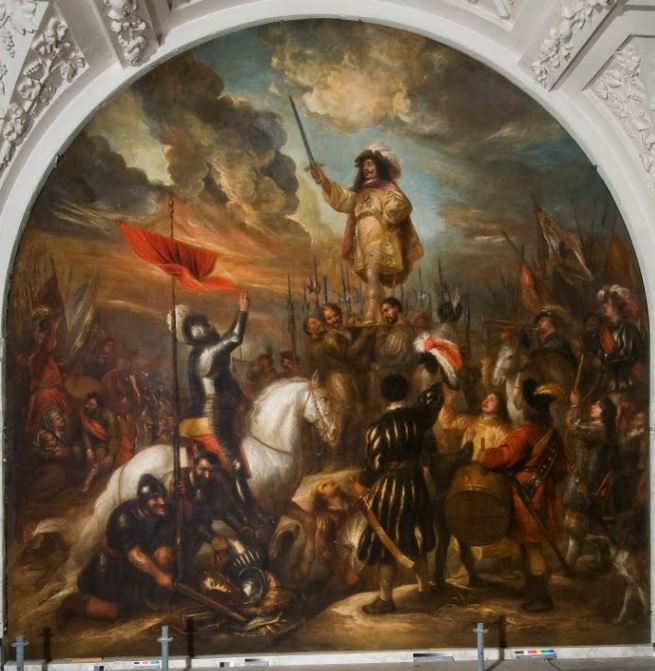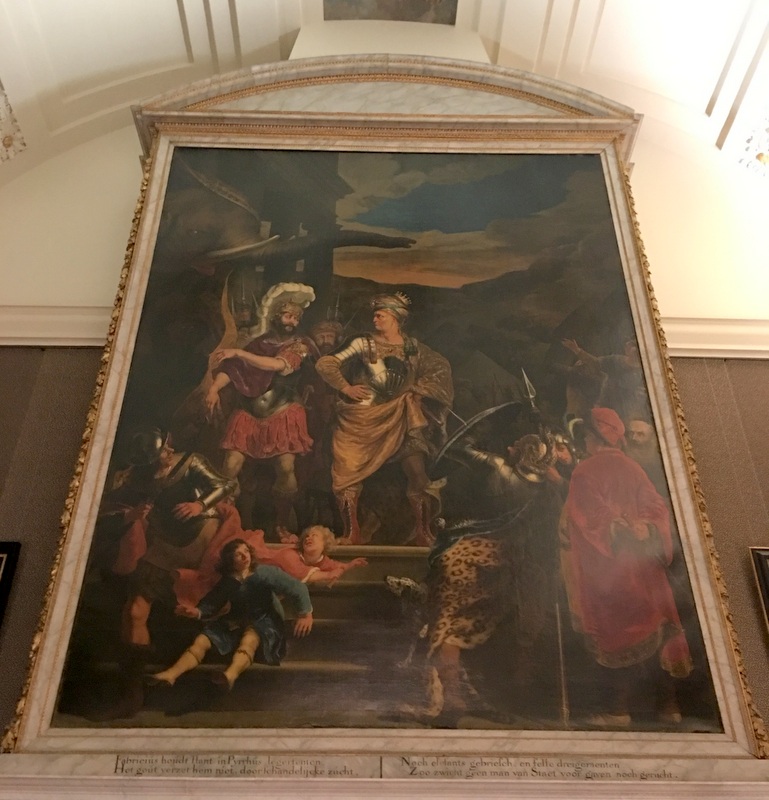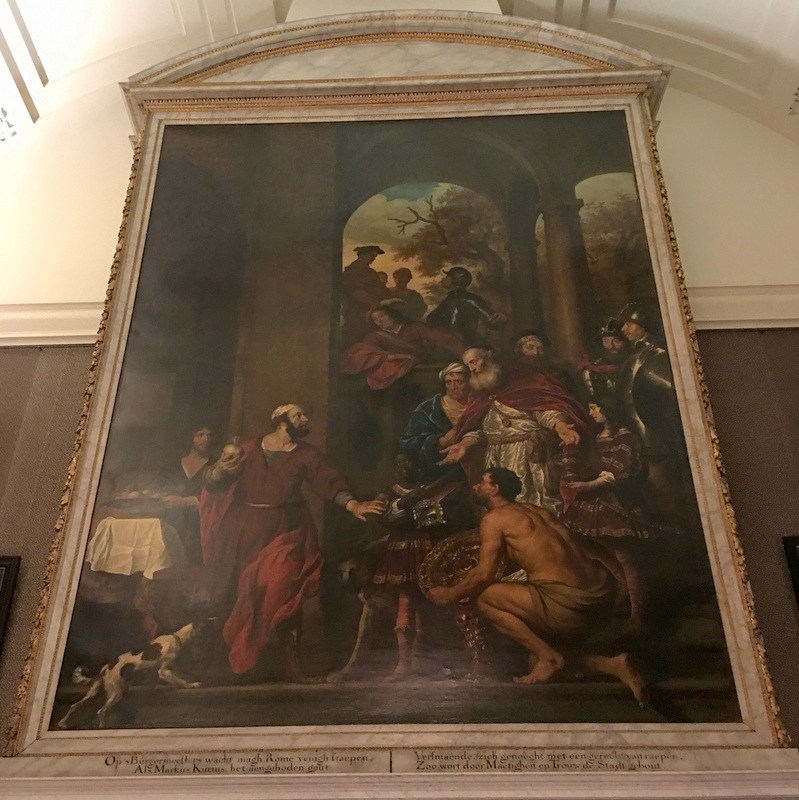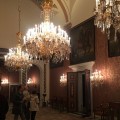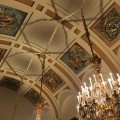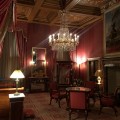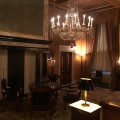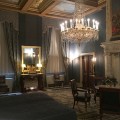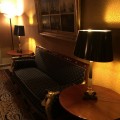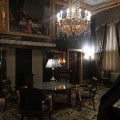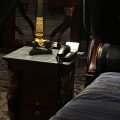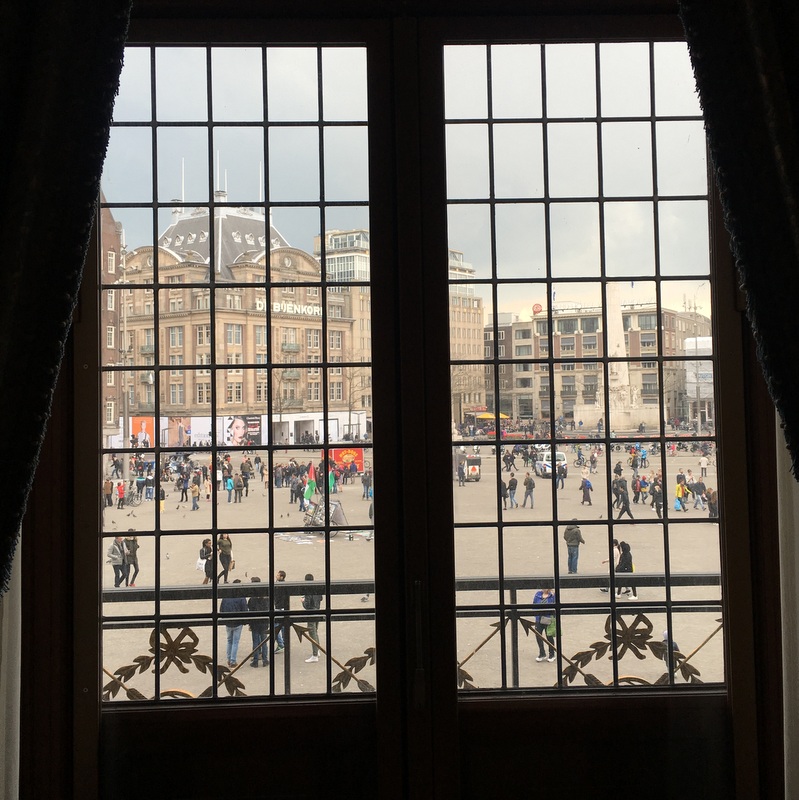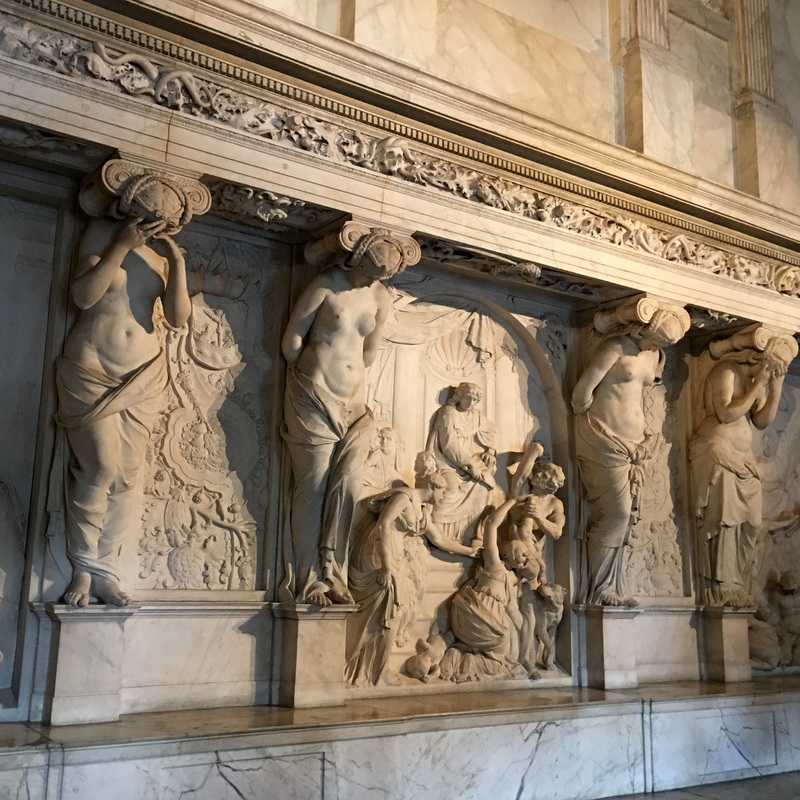The Dam Square in Amsterdam can be considered the center of the town. It is dominated by the Royal Palace. Here is a Google Earth image.
This monumental building has not always been a palace. It was built in the seventeenth century as the Town Hall of Amsterdam and functioned as such for 150 years. For a long time it was the largest administrative building in Europe and considered by many the Eight Wonder of the World.
In 1808 Louis Napoleon, brother of the French Emperor Napoleon Bonaparte, became King of Holland and converted the Town Hall into a Palace. Not for long, in 1813, after the fall of Napoleon, the Kingdom of the Netherlands was established and the former town hall became a Palace of the Royal House of Orange. Nowadays it is a ceremonial palace, still in use for the inauguration of a new monarch and other official functions.
Left a painting of the Town Hall as it was in 1673, right the present situation.
When not in use, part of the palace is open to the public. Here is a map of the main floor.
The impressive Burgerzaal (Citizens Hall) was the center of the Town Hall, freely accessible for the citizens of Amsterdam. Galleries lead to the various administrative offices
Ceilings and upper parts of the walls are decorated by paintings of famous Dutch Golden Age artists
- Ceiling of the Citizens Hall
- Paintings by Govert Flinck and Jan Lievens
- David and Goliath by Jacob Jordaens
- Another ceiling
It is not easy to see details of the paintings, because they are very high up the walls. Many of them show historical scenes, related to the fight for independence of the Dutch Republic. Here are two images, taken from the Internet. Left The Conspiracy of the Batavians under Claudius Civilis (1559-1562) by Govert Flinck and right Brinio Raised on a Shield (1661) by Jan Lievens. Click on the link and then on “details” for more information about these paintings.
It is interesting to note that Rembrandt, the most famous painter of his time, is not represented! Actually he created a painting about the same topic of Claudius Civilis as Govert Flinck and for a few months it was exhibited in the town hall. Then, for reasons unclear, it was returned to Rembrandt, who cut down the huge canvas (5×5 meter) to more manageable proportions . It is now in the Nationalmuseum of Stockholm and considered one of his masterpieces…:-)
Here are two more paintings. Amsterdam, the leading city of the Dutch Republic, saw itself as the successor to the Roman Republic. Its “burgomasters” (mayors) liked to identify themselves with the Roman consuls. Left, Fabritius and Pyrrhus (1656) by Ferdinand Bol, shows the consul Fabritius resisting the bribery attempts of King Pyrrhus. Right, in The incorruptible Consul Marcus Curius Dentatus (1656) by Govert Flinck, the consul holds up a turnip, waving away the gold and other gifts, offered to bribe him. Again: click on the links and then on “details” for more info.
On the map above, the original function of the various rooms is indicated. When the town hall was transformed into a palace, these rooms became bedrooms, dining rooms, ballrooms etc. They were furnished in Empire style. Even now some of the rooms are used as guestrooms for heads of state and other VVIP persons during official functions.
- The Council Chamber
- Ceiling with Coats of Arms
- Bankruptcy Chamber
- Treasury
- VIP guestroom
- Empire furniture
- Another VIP guestroom
- With a telephone!
The admission price for the Palace includes a headset. Explanations are given by a former mayor of Amsterdam. Very informative!
Two contrasting pictures to end this blog. In the left picture you can see the Dam Square and the balcony, from which traditionally the new monarch is presented to the people. This balcony is not original, it has been added in 1808 by Louis Napoleon. The picture to the right is the only part of the ground floor that you can visit. It is the Tribunal, just below the room with the balcony, where death sentences were pronounced. After the verdict the criminal was taken up to the first floor, where a temporary scaffolding was constructed and the execution (by hanging) took place. The executions were public, visible to the people on the Dam square.
When you visit Amsterdam, you should spend a few hours in this monumental building! And when you can not visit Amsterdam in the real, you can make a virtual tour, using the Google Cultural Institute ! Just amazing, what would we be without Google…:-)

